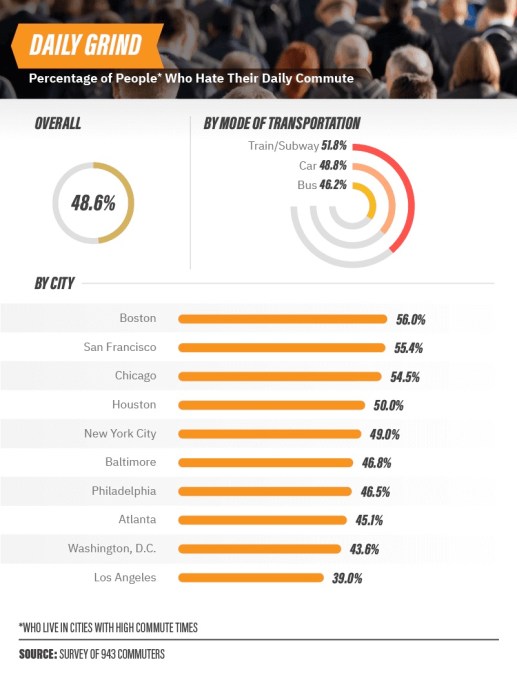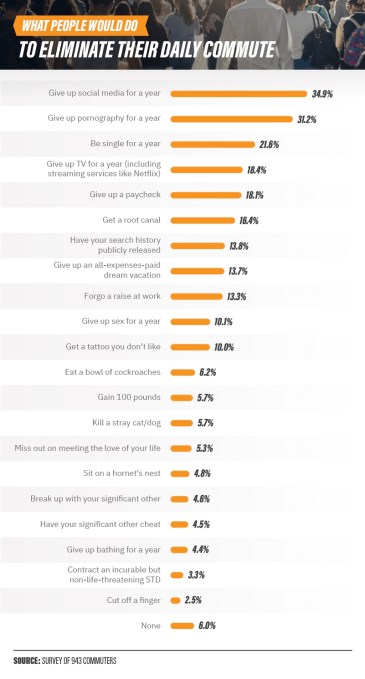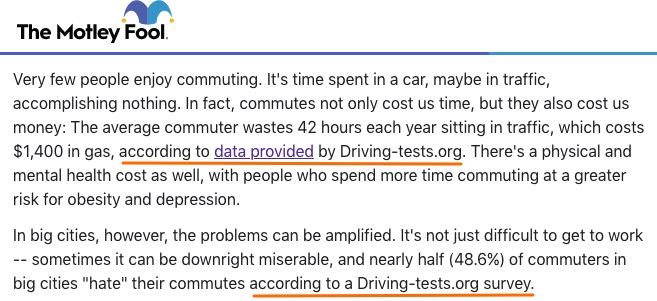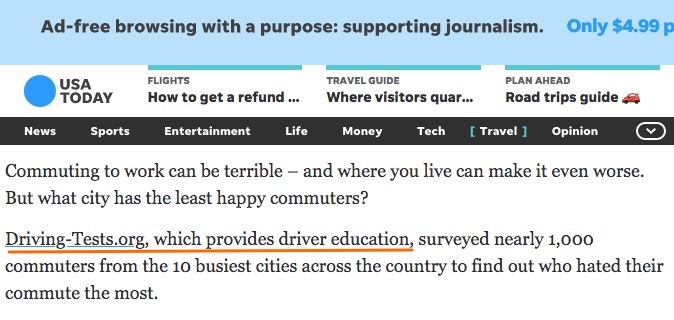Amanda Milligan
More posts from Amanda Milligan
A lot is debated in the SEO world, but nearly everyone can agree that links are and will continue to be vitally important to the health and rankability of a website.
Luckily, link building and brand awareness goals can be built into your content marketing strategy, which can be vastly elevated by combining your efforts with digital PR.
I’ll walk through how creating high-quality content and pitching it correctly to top publishers can earn you the valuable backlinks you’ve always wanted (and if you employ this strategy on an ongoing basis, the increase in organic traffic you’ve always wanted, too).
Choosing the right content idea
I have to start by saying that the most important thing about being cited in news sources is that you have to be newsworthy. Now that might go without saying, but what we as marketers might consider newsworthy about our brands isn’t necessarily newsworthy to a writer or to the greater public.
Content ideation tip #1: The best way to ensure your newsworthiness is to gather and analyze data. Even if the data set already exists, if it hasn’t been analyzed and presented in a straightforward, applicable, easy-to-understand way, your illustration of the data could be considered new and valuable.
I’ll touch on this again in a moment. But first, let’s dive into the content example I’ll be using throughout this piece.
For our client Driving-Tests.org, we didn’t want to just create content that’s solely related to driving tests themselves, even though that’s what the site is about. Since we wanted to increase our audience reach (so that we could target larger publishers), our goal was to select a topic that was a little more widely relatable.
Content ideation tip #2: When getting national brand coverage is a primary goal, try taking a “tangential” approach. Zoom out and consider what other topics in your industry would be interesting to your target audience while also being appealing to people you’ve never reached before.
One of our ideas was to survey people about their perceptions of their work commutes. We decided to survey 1,000 people about their sentiment around their daily commutes. Going back to tip #1, we’re gathering a new set of information no one else has, inherently making it more appealing to publishers.
In addition to being data-based and tangential, we also like to consider the emotions involved with different topics. What about driving brings people a sense of joy, fear, frustration, freedom, etc.?
Here’s one of the images featured in the project:

Just reading the word “commute” might make you cringe if you’re like half of Americans who truly hate their daily commutes.
Content ideation tip #3: Identify what emotions you’re tapping into and make sure they’re featured in your assets. In this case, we created an entire graphic around the results relating to hating commutes, because we knew people could emotionally relate to it.
Fractl research featured in the Harvard Business Review revealed that surprise was the most common emotion found in viral content. If you’re not sure what emotion you’re tapping into, but you have a feeling it’ll be interesting, ask yourself if it’s the surprise factor. People like being told new, shocking information that challenges their expectations.
Keep this in mind not only when you are deciding what takeaways to highlight in your content but also when you go to pitch that content.
You might be thinking, “But Amanda, hating your commute isn’t exactly surprising.”
Great point! I’ve also seen that validating what people often believe to be true (in this case that commutes are largely hated en masse by Americans) with data can be very powerful. But surprise always helps.
That’s why we explored other angles, too.

Seeing that more than a third of people would be willing to give up social media for a year to cut down on their commute is quite surprising. When you feature multiple interesting takeaways from your data, you’re giving publishers a lot to choose from.
Crafting personalized pitches to writers
One you have content you’re convinced wider audiences will appreciate, it’s time to start pitching the content.
However, you can’t just pitch it anywhere and everywhere. In fact, in our 2019 survey of 500+ writers, we discovered their biggest pet peeve was receiving irrelevant pitches.
Content pitching tip #1: Thoroughly research the individual writers you plan to pitch. Ask yourself all of these questions:
- How often do they write for the publication? (The more they write, the higher your chances of getting coverage.)
- What is their beat? (Don’t just look at the general beat, like sports or beauty. Some have more refined beats, like the world of beauty but through a psychology lens.)
- Do they ever cite outside studies/surveys? If they don’t, pitching them may be moot.
When you go to actually pitch the writer, make sure to personalize the email. Read their prior work and check their Twitter accounts. Do you have anything in common? What do you appreciate about what they’ve written? Remember: There is a human being on the receiving end of the email. Treat them like one!
Content pitching tip #2: Consider all relevant niches when building your pitch list. Sure, you may know the publications that target your primary audience the most, but are there national publications that have a wider reach and could still get your brand name out there to people who’d be interested.
In the same commuting project, we could have pitched car publications only, but of course this topic had a natural niche overlap with the work/business vertical. That meant we could pitch a variety of publications that don’t specifically deal with driving.
As a result, we earned coverage on (and links from) USA Today, The Motley Fool, Reader’s Digest, Ladders, Business News Daily, and more. As a bonus, look at how the client is mentioned in the first couple of the paragraphs, making it ideal for brand awareness.



Sometimes, when you successfully get coverage from top sites, you’ll see natural syndication occur, earning you more exposure.
Without getting into the value-of-nofollow-links debate (for the record, we’ve always thought nofollow links had value), the coverage from The Motley Fool syndicated to Yahoo News and a slew of local publications, providing even more SEO lift.
Content pitching tip #3: Whenever possible, localize! Many local news publications are highly respected and have high domain authority even though they’re not national. If you’re able to geographically zoom into your data to send location-specific pitches, it can earn you more top-tier links.
In our case, we got a lot of natural regional syndication, but if we didn’t, we would have targeted cities like Boston, where people hate their commute the most, or Los Angeles, where people surprisingly didn’t hate their commute as much as other cities.
When you put in the hard work of creating content that’s interesting to a large number of people, it’s much easier to earn high-quality media coverage for your content and brand. However, it’s an investment of time, money and talent in order to make this happen and execute it effectively. But once you do, and you make this an ongoing strategy, your results will compound and lead to a robust backlink portfolio.































Comment